
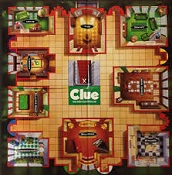


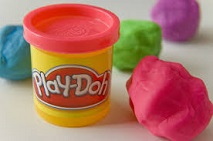

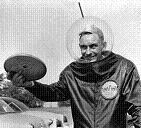
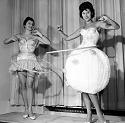










TLW's Game and Toyscope™ (Game and Toy Historyscope) |
By T.L. Winslow (TLW), the Historyscoper™ |
© Copyright by T.L. Winslow. All Rights Reserved. |
Original Pub. Date: Dec. 22, 2012. Last Update: Jan. 28, 2022. |
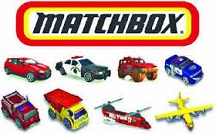
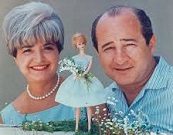

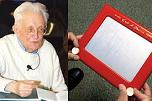

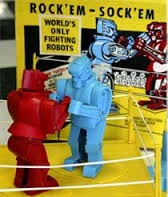

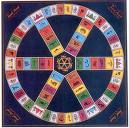

Westerners are not only known as history ignoramuses, but double dumbass history ignoramuses when it comes to game and toy history. Since I'm the one-and-only Historyscoper (tm), let me quickly bring you up to speed before you dive into my Master Historyscope.
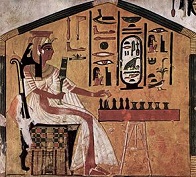
About 3100 B.C.E. the board game of Senet (ancestor of backgammon) is invented in Egypt.
About 3100 B.C.E. multicolor stone board game pieces are manufactured in Basur Hoyuk in SE Turkey in shapes incl. pyramids, spheres, pigs, dogs, and bullets.

In 474 C.E. Zeno (426-91) becomes Byantine emperor; during his reign the game of Backgammon is first mentioned, under the name Tabula (table).


On Sept. 13, 531 C.E. Khosrau (Khusrau) (Khosrow) (Khusru) (Khusro) (Chosroes) I Anushirvan ("of the deathless or immortal soul") (-501 to -579) becomes shah of the Sassanian Empire of Persia, granting toleration to Christians and pagans, and patronizing learning; during his reign the game of Chess is introduced from India. In 550 the Fables of Pilpay are translated into Pahlavi from the Sanskrit "Panchatantra" for Khosrau I, mentioning the new game; it is later trans. into Arabic, spreading throughout Europe.
In the 6th cent. C.E. the game of Chaturanga (Chatrang), a predecessor of chess begins to spread in India.
In 1298 Song Dynasty Chinese writer Zhou Mi (1232-98) dies after writing Former Events in Wulin, containing the first mention of the game of Dominoes; in the early 18th cent. they spread to Italy; the name domino comes from a hood worn during the Venice carnival.

In 1742 English-born Edmond Hoyle (1672-1769) pub. A Short Treatise on the Game of Whist, which becomes a hit, causing pirates to sell unauthorized eds., which Hoyle tries to override by autographing each copy for twopence, paid by his publisher Francis Cogan, who already paid him 100 guineas; it becomes the authoritative treatise on Whist until John Loraine Baldwin's work pub. in 1864; Hoyle follows with "A Short Treatise on the Game of Backgammon" (1743), "An Artificial Memory for Whist" (1744), "Treatise on Piquet" (1744), "Treatise on Chess" (1744), "Treatise on Quadrille" (1744), "Treatise on Brag" (1751), "Treatise on Probability Theory" (1754), and "Treatise on Chess" (1761), superseding "The Compleat Gamester" (1674); Cogan goes bankrupt in 1745, selling-out to Thomas Osborne, who pub. "Mr. Hoyle's Treatises of Whist, Quadrille, Piquet, Chess, and Back-Gammon" in 1748, calling it the 8th ed., becoming he std. English work on games, causing the phrase "According to Hoyle" to be launched.
In the 1860s the Joker card starts out as the Best Bower in the game of Euchre (Juker), evolving into the Joker in the 1870s and arriving in Europe in the 1880s along with the game of Poker.
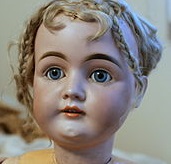
About 1860 Bisque (China) (Porcelain) Dolls, made of unglazed porcelain are made in France, having a realistic skin-like matte finish; their popularity peaks by 1900.
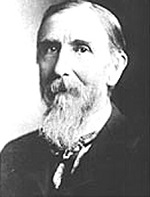
In 1860 after his clean-shaven lithograph of Abraham Lincoln flops, Vienna, Maine-born lithographer Milton Bradley (1836-1911) introduces his first game The Checkered Game of Life, which sells 45K copies the first year and goes on to become the first popular parlor game in the U.S.; it originally includes a "Suicide" square; he later drops the word "Checkered" from the title.
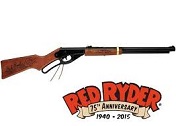
In 1886 Clarence Hamilton of the Plymouth Iron Windmill Co. in Plymouth, Mich. (founded 1880) invents the compressed air BB gun, and the co. begins handing them out as a promotional items with its windmills, changing its name to Daisy Manufacturing Co. on Jan. 26, 1895 after pres. Lewis Cass Hough utters the soundbyte "Boy, that's a daisy"; in spring 1940 they introduce the Red Ryder BB Gun, which resembles the Winchester rifle, named for the comic strip "Red Ryder" (1938-63) - you'll shoot your eye out?



On May 28, 1890 Md. atty. Elijah Jefferson Bond (1847-1921) files for a U.S. patent on the Ouija Board, which is granted on Feb. 10, 1891; in 1907 he founds the Swastika Novelty Co., with the word "Nirvana" trademarked; at first it is marketed in novelty shops. The original Patsy Ramsey? On July 8, 1913 Pearl Lenore Curran (1883-1937) (Mrs. J.H. Curran) of St. Louis, Mo. attends a seance, and her hand on the Ouija Board traces out the name Patience Worth, who tells of her birth in Dorset, England in the late 17th cent., followed by emigration to America and eventual death at the hands of an Indian war party; she follows the act with a series of historical novels, sometimes writing two simultaneously with different hands, incl. The Sorry Tale (about Christ), Hope Trueblood (19th cent. Victorian tale), and her big hit Telka: An Idyl of Medieval England, a play written in medieval English. Ever since, the Ouija Board is used by Spiritualists as the Twitter of the Occult; the Ouija board demon is known as Zozo AKA Pazuzu.
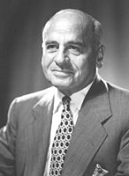

In Sept. 1900 Joshua Lionel Cowen (Cohen) (1877-1965) and Harry C. Grant found Lionel Corp. in New York City to manufacture electrical novelties, switching to toy trains in 1902; in 1969 it is acquired by Gen. Mills; it becomes defunct in 1993.



On Feb. 15, 1903 the first Teddy (Teddy's) Bear (named after Pres. Theodore Roosevelt) is designed by Richard Steiff (1877-1939), and introduced in the U.S. by Morris and Rose Michtom, founders of the Ideal Toy Co.
In mid-Feb. 1903 the first annual Am. Internat. Toy Fair is held in New York City, with Lionel Trains featured, moving to 200 Fifth Ave. in 1910, which in 1925 is named the Internat. Toy Center; by 2013 it hosts 1.5K cos. from 30 countries in 300K sq. ft. of exhibit space, attended by 9.5K buyers from 5K retail outlets, and 30K other attendees from 92 countries.
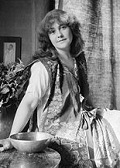

In 1909 Penn.-born mag. illustrator Rose Cecil O'Neill (1874-1944) pub. a poem in the Dec. issue of Ladies' Home Journal with illustrations of Kewpies, chubby, Cupid-like baby imps with rosy faces, tiny wings, topknots, and cirlicues on their foreheads who steal a wealthy child's Christmas toys; she patents Kewpie dolls in 1913, then pub. four more successful Kewpie books.

In 1913 Salem, Ore.-born Olympic pole vaulter Alfred Carlton Gilbert (1884-1962) introduces the Mysto Erector Structural Steel Builder, AKA the Erector Set.


In 1914 Am. cartoonist Johnny Gruelle (1880-1938), who won a contest sponsored by the New York Herald in 1911 with Mr. Twee Deedle creates the Raggedy Ann Doll for his daughter Marcella, and is issued U.S. patent #D47789 for it next Sept. 7, going on to mass-produce the dolls in Norwalk, Conn., marketing the books "Raggedy Ann Stories" (1918) and "Raggedy Andy Stories" (1920) with it.
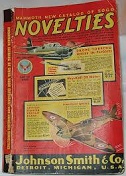
In 1914 after immigrating from Australia, Halifax, Yorkshire, England-born Alfred Johnson Smith (1885-1948) founds Johnson Smith & Co. in Chicago, Ill. to sell novelty, gag, and toy items incl. fake vomit, joy buzzers, whoopee cushions, X-ray goggles, BB guns, toy cannons, magic tricks, masks, musical instruments, joke and self-help books, moving to Racine, Wisc. in 1922, followed by Mt. Clements, Mich. in 1971, Detroit, Mich. in 1935, and Bradenton, Fla. in 1986; in 1971 they introduce the slogan "Things you never knew existed"; the 1929 catalog becomes a classic, and is repub. in 1970 with an intro by Jean Shepherd; in the 1960s the co. becomes a favorite of teenie TLW, who develops an arsenal of knives, clubs, and other weapons, and loves to shoot his cordite cannon out of his bedroom window; products incl. live alligators, turtles, etc.; too bad, some of the products and/or ads are white supremacist, incl. "Nigger Make-Up Outfit", and "Darkey in a Watermelon".
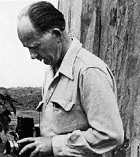
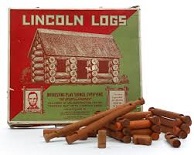
In 1916 redwood Lincoln Logs are invented by John Lloyd Wright (1892-1972), 2nd son of architect Frank Lloyd Wright, based on his Imperial Hotel in Tokyo; in 1918 he founds the Red Square Toy Co. to market them; on Aug. 31, 1920 he receives U.S. patent #1,351,86.
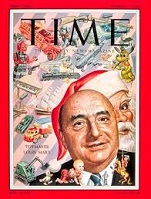

In 1919 Louis Marx & Co. is founded in New York City by Louis Marx (1896-1982), "the Henry Ford of the Toy Industry" and his brother David to mass produce inexpensive toys incl. playsets and toy cars and trains, each carrying the slogan: "One of the many Marx toys, have you all of them?", and a logo with the letters "MAR" with a large X through them, resembling a railroad crossing; by 1951 it has 12 factories worldwide, becoming the largest toy manufacturer in the world throughout the 1950s until competition from Mattel dethrones it, and it fails to advertise as much on TV and adapt to electronic toys; in 1964 it introduces Rock 'Em Sock 'Em Robots, followed in 1969 by Big Wheel low-rider tricycle; in 1972 it is acquired for $54M by Quaker Oats, and goes defunct in 1980.

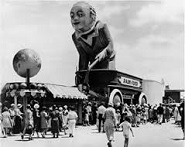
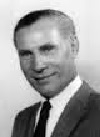
In 1927 Venice, Italy-born Am. designer Antonio Pasin (1897-1990), "the Little Ford", 1917 founder of the Liberty Coaster Co. in Chicago, Ill., maker (since 1923) of the all-wood Liberty Coaster introduces the red stamped steel Radio Flyer wagon for kids, named after the radio (Guglielmo Marconi) and the airplane (Charles Lindbergh); in 1930 he renames the co. Radio Steel and Manufacturing Co.; in 1933 he builds a mini 25-cent souvenir wagon store with a 45-ft. art deco statue of a boy riding his wagon at the Chicago World's Fair, going on to become the world's leading manufacturer of toy wagons (1.5K/day); the Baby Boom generation later bites bigtime.

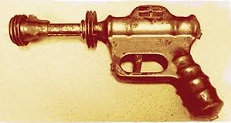
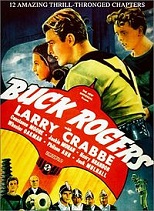
In Aug. 1928 spaceman hero Buck Rogers appears for the first time in the story Armageddon 2419 A.D., by Philly-born Philip Francis Nowlan (1888-1940) in Amazing Stories mag.; Buck falls asleep in 1929 and awakens in the 25th cent.; in 1933 the first Buck Rogers Toys are introduced, launching modern char.-based licensed merchandising, incl. the Buck Rogers line of rocket pistols, manufactured by Daisy; in 1939 the 12-part Buck Rogers serial is released by Universal Pictures, starring Charles Linden "Larry" "Buster" Crabbe II (1908-83).
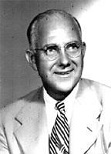
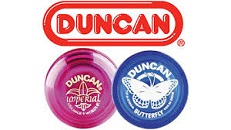
In 1930 after founding the Yo-yo Manufacturing Co. in Santa Barbara, Caif. in 1928 to manufacture a native toy, Filipino immigrant Pedro Flores sells out to Duncan Toys Co., founded in 1929 in Middlefield, Ohio by Kansas City, Mo.-born Donald F. Duncan Sr. (1892-1971), founder of the Good Humor ice cream truck line, turning them into a fad; in 1965 the trademark is ruled to have become generic; Duncan later sells parking meters; in 1968 it is acquired by Flambeau Inc.; Duncan's birthday of June 6 becomes Nat. Yo-Yo Day in the U.S.

In the 1930s Play-Doh modeling compound, made of flour, water, salt, boric acid, and mineral oil is invented by Noah McVicker of Kutol Products of Cincinnati, Ohio to clean coal residue from wallpaper; in 1956 his nephew Joe McVicker founds Rainbow Crafts Co. to market it as a child's toy, reaching $3M yearly sales by 1958; in 1965 it receives a patent, and Gen. Mills acquires the rights for $3M, marketing it via their subsidiary Kenner Products, which merges with Rainbow Crafts in 1971 until both are acquired by Tonka Corp. in 1987; in 1991 Hasbro acquires the rights; in 1996 gold and silver colors are added for the 40th anniv.

In 1934 the board game Monopoly is marketed by Parker Brothers, who claim that it was invented by Clarence Darrow, who sold them the rights; when it is later discovered that the game goes back to at least 1903, its trademark is ruled generic in 1979. On Mar. 13, 2017 Hasbro announces that an online vote has caused them to replace the boot, wheelbarrow, and thimble from the board game Monopoly, and replace them with the T-Rex, rubber ducky, and penguin.

In 1938 unemployed Poughkeepsie, N.Y.-born architect Alfred Mosher Butts (1899-1993) of Jackson Heights, N.Y. invents the game of Scrabble (originally Lexico, Criss Cross Words, and It), which game manufacturers reject until he sells it to entrepreneur James Brunot, who trademarks it and sets up a factory in Dodgingtown, Conn. in 1948, making 2.4K sets which lose him $450 until Macy's discovers it, causing Selcho & Righter to license it in 1952, after which it sells 100M sets by his death - buttheads?
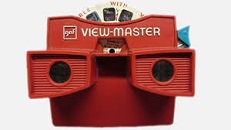
In 1939 pharmacist Edwin Eugene Mayer, organ maker William Gruber and Harold Graves of Portland, Ore. produce the first View-Master 3-D viewer, using Kodachrome color film (introduced in 1935), and introduce it at the New York World's Fair; in WWII it is adapted for educational use for military and medical personnel, but ultimately it ends up as an educational children's toy; in 2015 a VR model is introduced.


In 1943 Scottish-born GE engineer (New Haven, Conn.) James Wright (1874-1961) invents Silly Putty (Bouncing Putty) ("a liquid solid") while trying to make synthetic rubber for the war effort by substituting sulfur for carbon in the formula, mixing silicon oil with boric acid; in 1949 Peter C.L. Hodgson (1912-76), a copywriter for a small ad agency borrows $147 to market it out of a converted barn in North Branford, Conn. and ships it in pasteboard egg crates; Hodgson dies in 1976 leaving an estate of $140M; in 1977 Binney & Smith (makers of Crayola and Liquitex) buys the rights; by 1990 it sells 200M eggs (3K tons); in 1990 it comes out in four new fluorescent colors.

In 1943 the $1 Slinky precompressed helical spring toy (2.5" tall, containing 80 ft. of "high-grade blue-black Swedish steel wire" 0.0575 in. in diam. wrapped into 98 coils) is invented by naval engineer Richard Thompson James (1914-74) of Philadelphia, Penn., and becomes a toy craze after debuting in Gimbel's Dept. Store in Philly in Dec. 1945 and selling-out all 400 in 90 min.; in 1944 his wife Betty Mattas James (1918-2008) comes up with the name from a dictionary; in 1952 the Slinky Dog, invented by Helen (Herrick) Malsed of Wash. is introduced, and redesigned after the success of the 1995 film "Toy Story"; on Oct. 17, 1978 Donald James Reum Sr. of Master Mark Plastics in Albany, N.Y. patents the plastic Slinky; in 1998 Poof Products of Plymouth, Mich. acquires it; in 1999 the U.S. Postal Service issues a Slinky postage stamp; the 1960s theme song goes: "Slinky, Slinky, for fun it's a wonderful toy./ Slinky, Slinky, it's fun for a girl and a boy/ Everyone knows it's Slinky/ What walks down stairs, alone or in pairs,/ and makes a slinkity sound?/ A spring, a spring, a marvelous thing/ Everyone knows it's Slinky."
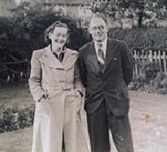

In 1944 the board game Cluedo (Clue) (originally Murder!) is patented by English musician Anthony Ernest Pratt (1903-94) as a game to play in bomb shelters.

In Jan. 1945 Mattel Inc. toy manufacturing co. is founded in El Segundo, Calif. by Harold "Matt" Matson and Elliot Handler (1916-2011), starting out selling toy pianos and dollhouse furniture before introducing Uke-A-Doodle toy ukulele in 1947; in the late 1940s Handler buys Matson out, and the co. is taken over by his wife Ruth Marianna Handler (nee Mosko) (1916-2002); in 1955 it begins sponsoring The Mickey Mouse Club TV series; in 1959 it introduces the Barbie Doll, followed in 1960 by the pull-string talking Chatty Cathy Doll; in 1960 it goes public; in 1971 it acquires Ringling Bros. and Barnum & Bailey Circus for $40M, selling it back in 1982 for $22.8M; on Nov. 3, 1975 Mattel is revealed to have fabricated press releases and financial documents to "maintain the appearance of continued growth", causing the founders Ruth and Elliot Handler resign; in 1977 it launches Mattel Electronics to produce electronic handheld games, which splits-off in 1982; in 1979 it acquires the Holiday on Ice and Ice Follies for $12M, and Western Publishing for $120M; in 1993 it acquires Fisher-Price, followed in 1999 by The Learning Co, selling it for a loss in 2000; on Aug. 14, 2007 it recalls 18M products with lead surface coatings and strong detachable magnets.

In 1946 Richfield, Utah-born Walter Frederick "Fred" Morrison (1920-2010) of Santa Monica, Calif. invents the Frisbee (original name Whirlo-Way, then Pluto Platter in 1955) (originally a popcorn can lid then a cake pan), selling the rights to Wham-O in 1957 and going on to sell 200M units by 2009.

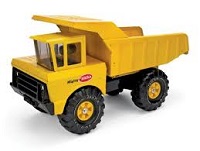
In 1946 Tonka (Sioux "great, big") diecast toy truck maker is founded in Mound, Minn. by Lynn Everett Baker (1898-1964) et al. of Mound Metalcraft after they acquire the business from bldg. occupant E.C. Streater, changing their name in Nov. 1955; their logo shows nearby Lake Minnetonka; in 1987 it acquires Kenner Parker for $555M; in 1991 it is acquired by Hasbro.

In 1947 Kenner Products is founded on Kenner St. in Cincinnati, Ohio just N of Union Terminal by brothers Albert, Phillip, and Joseph L. Steiner, pioneering TV ads for toys in 1958, incl. Bubble-Matic bubble-blowing toy gun (1957), Girder and Panel building sets (1957), Give-a-Show Pojector (1959), Easy-Bake Oven (1963), Electric Mold Master (1963), Spirograph drawing toy (1966), Star Wars action figures (1978), DC Comics Super Powers action figure (1984), Real Ghostbusters action figures (1986), Starting Lineup sports action figures (1988), Dark Knight (Batman) action figures (1990), and Jurassic Park line (1998); in the early 1960s it introduces its mascot the Kenner Gooney Bird, along with the logo "It's Kenner! It's fun!", which is discontinued in 1974; in 1967 it is acquired by Gen. Mills, which merges its Rainbow Crafts Div. along with Play-Doh; in 1985 it spins-off Kenner Parker Toys, which in 1986 sells off its Lionel Trains div.; in 1987 it is acquired by Tonka, which is acquired by Hasbro in 1991; in 2000 its HQ is closed and its products merged into Hasbro's.
In 1948 the Magic 8-Ball (originally the Syco-Seer) is patented by Albert C. Carter, who sells it to Brunwick Billiards of Chicago, Ill. who repackage it in an oversized black-and-white 8-ball, making it a hit; the 20 answers canned answers incl. 10 affirmative, five non-committal, and five negative.
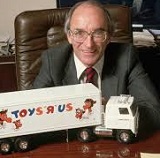
In 1948 Toys "R" Us (originally Children's Supermarket) is founded in Washington, D.C. by Charles P. Lazarus (1923-) to sell baby furniture, changing the name to the present one and adding toys in 1957, with a new HQ in Rockville, Md., and a new mascot, Geoffrey the Giraffe (Dr. G. Raffe until 1969); in 1966 it is acquired by Interstate Department Stores (owner of White Front and Topps), creating a monopoly until bigger sharks incl. Walmart, Target, and Amazon eat into their share; it goes on to expand to 850+ stores in the U.S. and 750+ outside the U.S., moving the HQ to Wayne, N.J.
In 1948 Wham-O Manufacturing Co., is founded by USC grads Richard Knerr (1925-2008) and Arthur "Spud" Melin (1925-2002) in San Gabriel, Calif. with less than $1K in capital to make slingshots, going on to acquire the rights to the Frisbee in 1957, the Hula Hoop in 1958, Slip 'N' Slide in 1961, and Super Ball in 1965 before being acquired by Kransco Group Cos. in 1982, which is acquired in 1994 by Mattel, becomes independent again in 1997, and is sold for $80M to Cornerstone Overseas Investment Ltd. in China, followed in 2009 by the Aguilar Group.
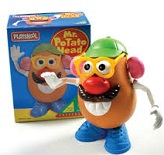
In 1949 Mr. Potato Head is invented by George Lerner (1922-95), and first marketed in 1952 by Hasbro, becoming the first toy advertised on TV; in 1964 a plastic potato is incl. so that nasty rotting potatoes can be avoided; on Sept. 12, 1998 The Mr. Potato Head Show debuts for 13 episodes (until Feb. 16, 1999).

In 1953 Die-cast Matchbox Cars, designed by self-trained English engineer John W. "Jack" Odell (1920-2007) are introduced by the English firm of Lesney Products & Co., founded on Jan. 19, 1947 by Leslie Charles Smith (1918-2005) and (not related) Rodney Smith (1917-2013), whose accurately detailed Land Rover, Muir Hill Site Dumper, Road Roller, Massey Harris Tractor, Cement Mixer et al. can be carried in yellow match boxes; Odell designs the first toy in 1952, the red-green brass steamroller for his daughter Anne, who liked to take spiders to school in a matchbox, and sets up a factory in the Rifleman, a London pub; the 19th vehicle is the MG TD roadster, the first Matchbox car; they sell for 49 cents each in the U.S.; by 1962 they are producing 1M units a week, more than the output of real automakers; the co. goes bankrupt in 1982, and is acquired by Universal Toys, Tyco Toys, and finally Mattel in 1997, going on to sell 3B units in 12K models.

In 1958 after seeing bamboo hoops from Australia at the New York Toy Fair in Mar., Wham-O (named after the sound made by their first product, a slingshot) introduces the 3-ft. gaudy polyethylene Hula Hoop (invented by Arthur K. "Spud" Melin and Richard Knerr) to the U.S. public at $.93 each for a 16% profit, and ups the price to $1.98 after a craze begins and it becomes America's most popular toy, used by adults for calisthenics; by Labor Day they sell 2M units for a net profit of $300K, but knockoffs appear which sell tens of millions more, and the fad suddenly dies off by the summer of 1959.

In 1958 Lego, founded in 1932 in Denmark patents its stud-and-tube coupling system for its plastic bricks, going on to become the world's biggest toy co., with $4.6B sales in 2014 vs. $4B for Mattel.
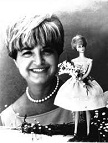

On Mar. 9, 1959 (her official birthday) the 11-1/2"-tall Barbie Doll ("Teen-age Fashion Model"), invented by Ruth Marianna Handler (nee Mosko) (1916-2002) of Mattel, Inc. (named after her daughter Barbara and based on the German doll Bild Lilli) debuts at the Internat. Toy Fair in New York City; her full name is Barbara Millicent Roberts; her adult figure proportions incl. breasts are a little tough to attain in real life; the sideways glance is replaced with a forward glance in 1971; it sells 350K units the first year, and goes on to become the most successful toy line of all time (until ?), with 1B+ sold; in Nov. 2017 Matttel introduces Hijab Barbie for the Muslim market.

In 1959 the Chatty Cathy pull-string talking doll with lifelike decal eyes and 11 phrases is introduced by Mattel, becoming the 2nd most popular doll of the 1960s after their Barbie; in 1962 they introduce Chatty Baby, followed in 1963 by Charmin' Cathy et al., and in 1965 by Singin' Chatty; starting out a 5-y.-o. white blonde-blue girl with short bobbed hair, it morphs into brunette, auburn, and African-Am. versions, introducing long twin ponytails in 1963.

In 1959 the aluminum-dust-filled Etch A Sketch (originally L'Ecran Magique) is invented by Andre Cassagnes (1926-2013) of France, and purchased by the Ohio Art Co. of the U.S., where it is introduced next July 12 for $2.99 and becomes a Baby Boomer for Xmas, the #1 seller of the season (600K units); by 2013 100M are sold.
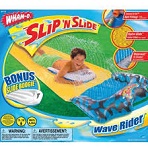
In 1961 Wham-O introduces the Slip 'N Slide long thin plastic sheet that can be connected to a garden hose for backyard fun; too bad, it's only for kids.
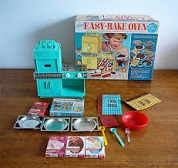
In 1963 the Easy-Bake Oven is introduced by Kenner Products of Cincinnati, Ohio, using two 100-watt incandescent light bulbs, supplied with cake mix and small round pans, requiring only water, selling 500K the first year; by 1997 16M are sold.

On Feb. 2, 1964 Mattel introduces the $4 G.I. Joe, a 11.5-in. soldier doll (Rocky the Action Soldier/Marine, Skip the Action Sailor, Ace the Action Pilot) with 21 movable parts; to target boys, who won't play with dolls, the term "action figure" is invented, and it is called a "movable fighting man" instead of doll; to stop copycats, there is a scar on the right cheek, a trademark on the right buttock, and the right thumbnail is on the underside of the thumb; the original toys are sold until 1978; by 1982 it shrinks to 3.75 in.; on Dec. 3, 1999 a 1963 prototype is purchased by Matt Babek of the U.S. for $14K at an eBay online auction; in 2003 another prototype is auctioned by Heritage for $200,001.00.

In Jan. 1966 Milton Bradley begins marketing Twister (originally Pretzel), the first game to use humans as playing pieces ("sex in a box"), invented by in-store display designer Reynolds Windsor "Reyn" Guyer (1935-) for a promotion for S.C. Johnson; on May 3 the game is featured on Johnny Carson's Tonight Show, played by Johnny and Eva Gabor, causing lackluster sales to begin skyrocketing, selling 19M copies by 2010; on May 2, 1987 4,160 students at the U. of Mass. play the record largest game of Twister.
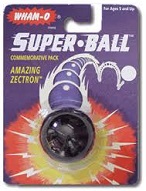
In 1966 the 98-cent SuperBall (Super Ball) is introduced by Wham-O, invented in 1964 by chemist Norman H. Stinley of Bettis Rubber Co., made of vulcanized Zectron, containing his invention polybutadiene synthetic rubber, along with hydrated silica, zinc oxide, stearic acid et al., and pressured to 80 atm., causing it to bounce to 92% of its initial height; a giant hit, 6M are sold by the end of the year, when the price slides to 10 cents; on July 25 after his daughter says the word "Super Ball" with her Texas twang, AFL founder Lamar Hunt writes a letter to NFL commissioner Pete Rozzell, coining the name Super Bowl for the AFL-NFL Championship game, which is officially adopted with Super Bowl #3.
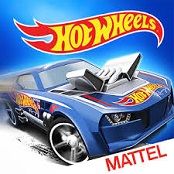
On July 10, 1968 Mattel introduces Hot Wheels die cast miniature cars, which compete with English-made Matchbox Cars and go on to become functional and equipped for electric slot-car racing; in 1997 Mattel acquires Tyco Toys, owner of Matchbox.
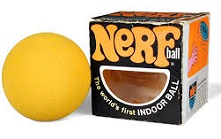
In 1970 the soft light solid spongy NERF Ball, the "first official indoor ball" is introduced by Parker Brothers, invented in 1969 by Reynolds Winsor "Reyn" Guyer (1935-) of Minn., who also invented Twister; the slogan is "It's Nerf or Nothin'"; in 1991 the NERF Bow 'N' Arrow is introduced by Hasbro, followed in 1992 by the NERF Blaster toy gun.
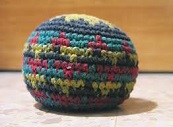
In 1972 John Stalberger and Mike Marshall (1947-75) of the Oregon City, Ore. invent the Hacky (Hackey) Sack (Footbag), which becomes a hit in the 1980s; in 1983 it is acquired by Wham-O.


In 1974 Tactical Studies Rules (TSR, Inc.) brings out the game Dungeons & Dragons, invented by Ernest Gary Gygax (1938-2008) and David Lance "Dave" Arneson (1947-2009) of the U.S., featuring a 20-sided die, hit points, armor classes, character levels, experience points, and dungeon crawls.

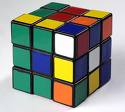
In 1974 Hungarian interior designer Erno Rubik (1944-) designs the Rubik's Cube; it takes six years to become an "instant hit", going on sale in Budapest in 1979, followed by the U.S. in 1980 with distributor Ideal Toys and spokesperson Zsa Zsa Gabor, selling 100M units by 1982, after which enthusiasm drops sharply when few care about Group Theory and get tired of the 43 quintillion possible moves, plus easy solution methods that do it in so-many rote moves are pub., starting with Morwen B. Thistlewaite in 1981, who could do it in 52 moves; in 2010 mathematicians derive God's Solution, which takes 20 moves or less.


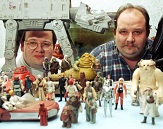
Can a new Ruling Fairy Tale save the world, why not try it? On May 25, 1977 the blockbuster film Star Wars by dir.-writer George "the Maker" Lucas (1944-) debuts; ticket price is $2.25; "May the Force be with you" joins the lexicon; the Western world gets a new uber-myth called the Force, which neatly bypasses the Bible and other organized religions without directly dissing them and even paying homage to their common grounding in ancient myths, while enshrining Science and Technology firmly above all possible Inquisitions; $4.5B of Star Wars merchandise is eventually sold (about what the U.S. spends each year on its real Star Wars program by the 21st cent.); Star Wars (Episode 4 of 6: A New Hope) (with 60 SFX shots) morphs sci-fi into the comic book realm, with dime-store philosophy added for emphasis to create a near-religious consumer cult (if only they can find a power source for all those gizmos and ships?); Luke Skywalker, Princess Leia, Obi-Wan Kenobi, Han Solo, the Wookie, the Millennium Falcon ("make it look like a hamburger" - Lucas), Darth Vader, Storm Troopers; Carrie Fisher gets the part of Princess Leia after first choice Jodie Fisher can't get out of her Disney contract; Sir Alec Guinness plays Obi-Wan Kenobe, and talks Lucas into killing him off because he hates the psychobabble lines, but makes a mint, allowing him to pick and choose roles; James Earl Jones makes $7K for his voiceover role as Darth Vader after Orson Welles is turned down for having a voice that is too recognizable; Lucas has to beg 20th Cent. Fox for more money for special effects, but he scores big by retaining ownership of the 6-film series and merchandising; #1 grossing film of 1977, with $460.9M at the domestic box office and $798M worldwide, becoming the most popular film series in history (until ?); spawns 300M Star Wars action figures made by Kenner in 1978-85; "The Force is what gives the Jedi his power. It's an energy field created by all living things. It surrounds us and penetrates us. It binds the galaxy together"; Lucas later utters the soundbyte; "How do democracies get turned into dictatorships? The democracies aren't overthrown; they're given away... Star Wars was really about the Vietnam War."


In June 1978 the Space Invaders arcade video game, designed by Tomohiro Nishikado (1944-) is released by Taito Corp. of Japan, which licenses it to the Midway div. of Bally in the U.S., becoming a giant money magnet in bars, earning $500M by 2007, causing a coin shortage in Japan, becoming the #1 arcade game of all time (until ?); in 1980 a version for the Atari 2600 becomes their first killer app., earning $2B a year by 1982.
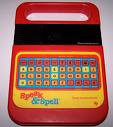
In June 1978 the Speak and Spell handheld educational toy is introduced by Texas Instruments, becoming the first low-priced mass-produced consumer product with a human voice generated by a single microchip, the TMC 0280; it can pronounce 165 words with a 131,072-bit ROM; meanwhile the Nippon Electric Co. introduces the Voice Data Input Terminal that can recognize 120 words in group of up to five, with a 300ms delay.
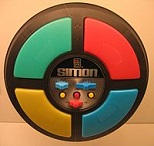
In 1978 the $24.95 Simon electronic memory skill game is launched at Studio 54 in New York City by "the Father of Video Games" Ralph Henry (Rudolf Heinrich) Baer (1922-2014) and Howard J. Morrison (1932-), and distributed by Milton Bradley.
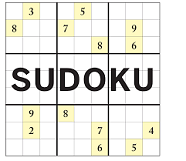
In May 1979 Am. architect Howard Garns (1905-89) pub. the game Sudoku (Jap. "single number") (originally "Number Place") in Dell Pencil Puzzles and Word Games, a 9x9 grid where each column, row, and 3x3 sub-grid contains all digits from 1-9; in 1986 the Japanese co. Nikoli pub. it, making it popular.

On Dec. 15, 1979 Canadians Chris Haney (1950-2010) and Scott Abbott invent Trivial Pursuit, a trivia game with a die that is rolled to pick the color category, which goes on to become a big hit in the U.S. after being released in 1984, reaching $256M in sales; Fred L. Worth, author of "The Trivia Encyclopedia" (1974) and "The Complete Unabridged Super Trivia Encyclopedia" (1977) sues after finding that they copied his errors, seeking $300M in damages, but loses in the U.S. Supreme Court in Mar. 1988 - sorry, can't copyright facts, even wrong ones?

In 1979 Xavier Roberts (1955-) and five friends open Babyland General Hospital in Cleveland, Ga. for the Little People, which in 1982 are renamed the Cabbage Patch Kids (originally the Little People); the craze peaks in 1985 with $600M in retail sales.
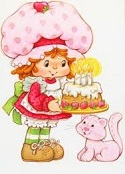
On Mar. 1, 1980 the children's TV series Strawberry Shortcake debuts for 50 episodes (until 1983), designed in 1977 by Am. Greetings employee Muriel Fahrion for greeting cards; her cat is named Custard; Strawberry Shortcake Toys are marketed by Kenner.
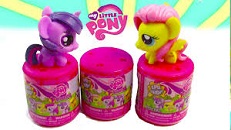
In 1981 My Little Pony (originally My Pretty Pony) 10" plastic pony toys are introduced, created by Bonnie Zacherle et al., receiving U.S. patent #D269986 in Aug. 1983, distributed by Hasbro, causing an animated TV series to debut in 2010, after which they sell $650M in 2013 and $1B in 2014.
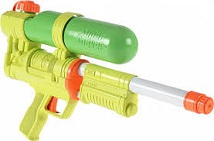
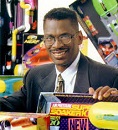
In 1982 the $10 Super Soaker (original name Power Drencher until 1991) recreational water gun is invented by Mobile, Ala.-born African-Am. engineer Lonnie George Johnson (1949-), who receives U.S. patent #4,591,071 on May 27, 1986; in 1989 it is licensed to Larami Corp. (later acquired by Hasbro), becoming the best-selling toy in the U.S. in 1992.
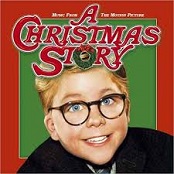


On Nov. 18, 1983 Bob Clark's A Christmas Story debuts, based on the 1967 autobio. novel "In God We Trust, All Others Pay Cash" by radio personality Jean Parker "Shep" Shepherd (1921-99) (the narrator), immortalizing B-actor Darren McGavin (1922-2006) in a nostalgic story about the single-minded obsession of 9-y.-o. Am. white boy Ralphie Parker (Peter Billingsley) to acquire a Daisy Red Ryder BB gun for Xmas in the boring 1950s despite everybody warning him "You'll shoot your eye out"; Melinda Dillon plays the mommy; he uses his decoder ring to decode the message "Drink your Ovaltine"; does $19.3M box office on a $4M budget.
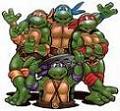
In May 1984 Kevin Brooks Eastman (1962-) and Peter Alan Laird (1954-) pub. Teen-Age Mutant Ninja Turtles, a B&W comic book about radioactive "mutigant" turtles Donatello, Leonardo, Michelangelo, and Raphael, who were trained by a rat sensei in the art of ninjutsu, and live in the sewers of New York City, battling crime while hiding from society; takes off after a UPI story turns on Playmates Toys, who in 1988 licenses Teenage Mutant Ninja Turtles Toys, reaching $1B in sales by 1990, along with a CBS-TV show (debuts Dec. 28, 1987) and a 1990 film that does $250M box office.
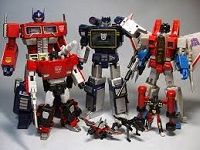
In 1984 the Transformers line of transforming robot toys is introduced by Takara Co. of Japan, which sells the North Am. distribution rights to Hasbro; the ad slogans are "More Than Meets the Eye" and "Robots in Discuise"; the toys launch spinoffs incl. an animated TV series about the good Autobots vs. the evil Decepticons, followed by an animated film in 1986.

On Sept. 13, 1986 (Sat.) Pee-Wee's Playhouse debuts on CBS-TV on Saturday mornings for 46 episodes (until July 27, 1991), starring has-to-be-Jewish Paul Reubens (Rubenfeld) (1952-) (the reductio ad absurdem of the Beatles?), featuring cool props incl. Magic Screen, Chairy, Conky the Robot, Pterry the Baby Pteranodon, and Jambi the Genie (played by John Paragon) (known for the soundbyte: "Mecca lecca hi, mecca lecca lo, meeca hiney ho"), along with cool regulars incl. Miss Yvonne (played by Lynne Marie Stewart), Reba the Mail Lady (played by S. Epatha Merkerson), Captain Carl (played by Phil Hartman), and Cowboy Curtis (played by Laurence Fishburne); the theme song is sung by Cyndi Lauper; originally aimed at kids, it becomes an adult and cult favorite also, spawning a line of Pee-Wee's Playhouse Toys; too bad, his arrest in July 1991 in Sarasota, Fla. in a porno house causes CBS to stop airing the super-popular reruns; "I know you are, but what am I?"
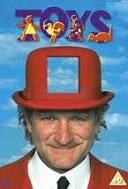
On Dec. 18, 1992 Barry Levinson's Toys debuts, featuring sumptuous sets by Ferdinando Scarfiotti and outdoor scenes in SW Wash. and NC Idaho; stars Robin Williams as Leslie Zevo, who is passed over by his father Kenneth Zevo (Donald O'Connor) for ownership of the Zevo Toys factory in Moscow, Idaho for his brother Lt. Gen. Leland Zevo (Michael Gambon); also stars Joan Cusack as Alsatia Zevo; does $23.3M box office on a $43M budget.
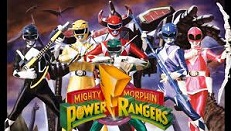
On Aug. 28, 1993 the Mighty Morphin Power Rangers TV series debuts on Fox TV for 145 episodes (until Nov. 27, 1995), produced by Egyptian-born pro-Israel Israeli-Am. billionaire Haim Saban (1944-), based on the japanese TV series "Kyoryu Sentai Zyuranger", set in Angel Grove, Calif. about two astronauts who discover a container from outer space and release evil alien sorceress Rita Repulsa after 10K years of confinement, planning on conquering Earth, causing wise alien sage Zordon and his robotic asst. Alpha 5 to select five "teenagers with attitude" to save it, incl. Jason Lee Scott, Kimberly Hart, Zack Taylor, Trini Kwan, and Billy Cranston, giving them super powers and colossal Zord assault machines, which can combine into the Megazord; spawns the film "Mighty Morphon Power Rangers: The Movie" (1995), plus a line of Mighty Morphin Power Rangers Toys.
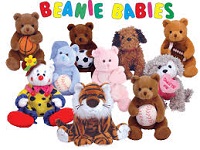
In 1993 aspiring condo toycoon H. Ty Warner (1944-) of Ty Inc. introduces $5 retail/$2.50 wholesale Beanie Babies plastic pellet-stuffed dolls, mass-produced in China, incl. Legs the Frog, Squealer the Pig, Spot the Dog, Flash the Dolphin, Splash the Whale, Chocolate the Moos, Patti the Platypus, Brownie/Cubbie the Bear, and Pinchers the Lobster, starting slow then turning into a nat. craze, making Warner a billionaire, and later making up 10% of the sales of Ebay as designs are retired regularly to increase scarcity; in 1998 sales reach $1.4B, and employees are given their entire year's salary as a Christmas bonus, plus a free red #1 Bear (only 253 produced), which reaches $5K on eBay; too bad, like Tulipmania in Holland, the Beanie Baby Bubble bursts; in 1996 Teenie Beanies ae introduced, sold by McDonald's for the 17th anniv. of Happy Meals; in 2008 Beanie Babies 2.0 are introduced.
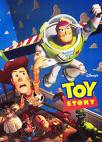
On Nov. 19, 1995 John Lasseter's Toy Story (Pixar/Walt Disney) debuts, the first feature length 100% computer animated film, starring cowboy Woody (voice of Tom Hanks) as favorite toy, who has to deal with new toy Buzz Lightyear (Tim Allen); incl. Don Rickles berating a hockey puck; #1 movie of 1995 ($192M U.S. and $362M worldwide box office on a $30M budget); "The toys are back in town"; "That wasn't flying. That was... falling with style" (Woody).
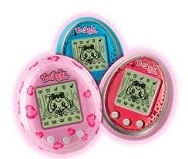
On Nov. 23, 1996 the Tamagotchi (Jap. "tamago" = egg + Eng. "watch") handheld digital pet is released by Bandai of Japan, selling 76M by 2010.
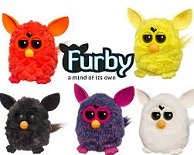
In 1998 the Furby domestically-aimed electronic robotic toy, invented by David Hampton is introduced by Tiger Electonics, becoming a Christmas season hit, selling 1.8M in 1998, 14M in 1999, and 24M in 2000; it starts out speaking Furbish, and gradually learns English; in 2005 the Emoto-Tronic Furby with voice recognition and complex facial movements is introduced, followed in 2012 by a model with LCD eyes and a mobile app; in 2005 Hasbro takes over distribution.
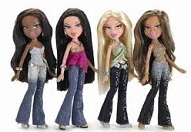
On May 21, 2001 $9.99-$22.99 Bratz fashion dolls are introduced by ex-Mattel employee Carter Bryant, starting with four 10-in. models, Yasmin, Cloe, Jade, and Sasha, followed in 2015 by Raya, featuring almond-shaped eyes, eyeshadow, and lush glossy lips; starting out slow, they sell $2B in 2005, capturing 40% of the fashion doll market vs. 60% for Barbie; the ad slogan is: "The girls with a passion for fashion!"; too bad, in Dec. 2006 the Nat. Labor Committee announces that factory workers in China churn them out for only 17 cents a doll while working 94.5 hours/week at 50 cents/hour.
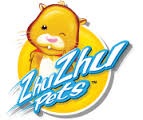
In 2008 $9 Zhu Zhu (Chin. "little pig") Pets are introduced by Russ Hornsby of Cepia LLC of St. Louis, Mo., becoming a craze during the 2009 Xmas holidays.